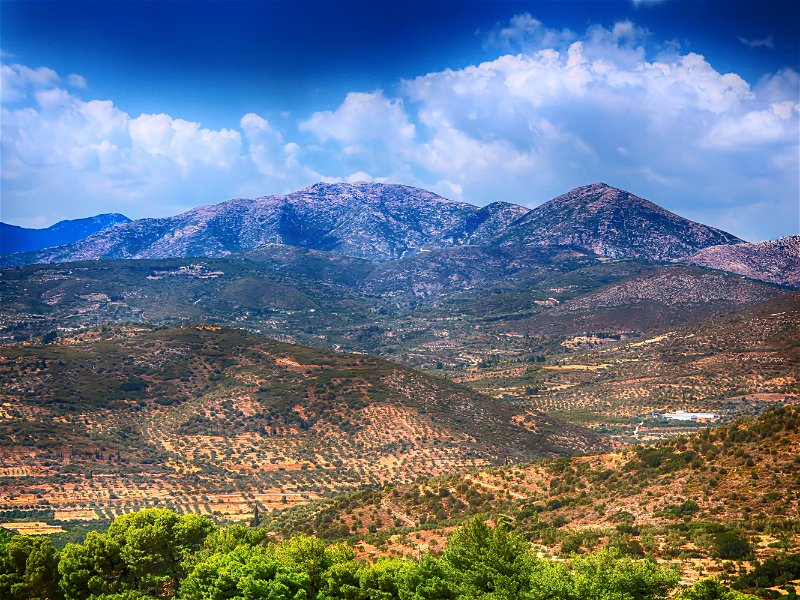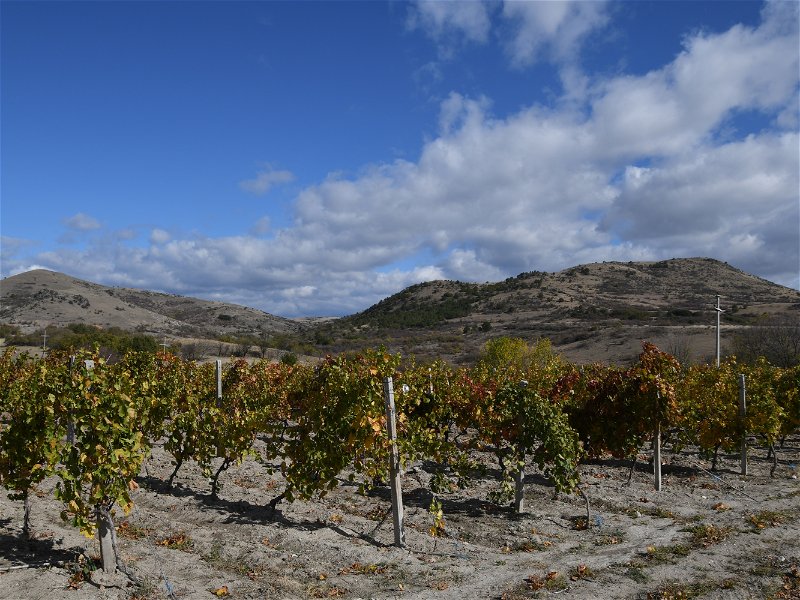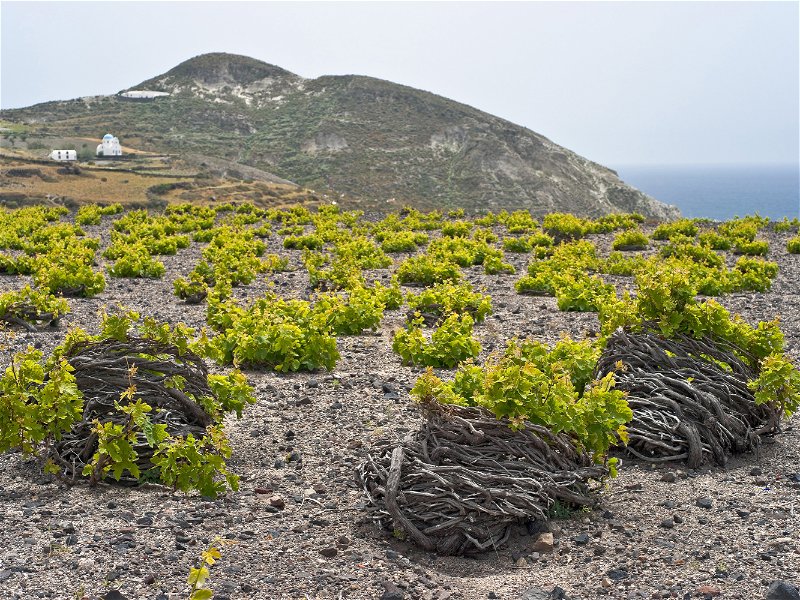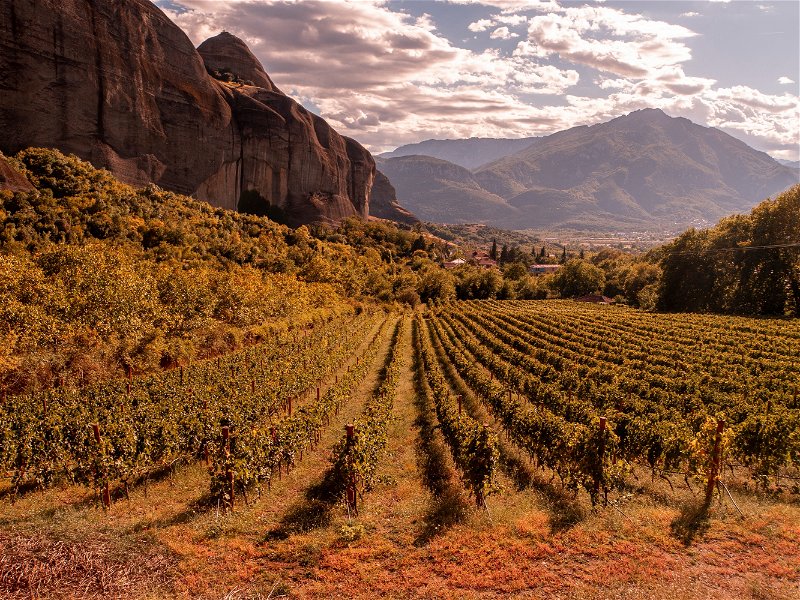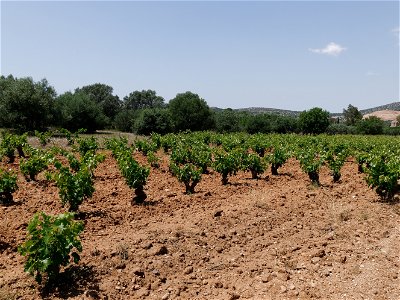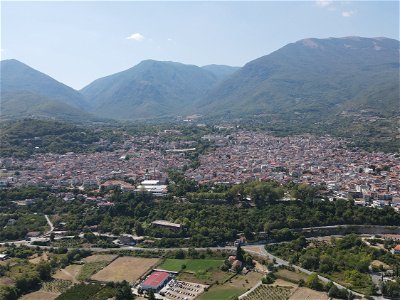Greece is considered the birthplace of European viticulture. According to legend, the supreme god Zeus had a tryst with Seméle, the goddess of the Bacchic frenzy. Dionysus, the god of wine, resulted from this affair. In fact, findings prove that wine was already cultivated in Crete around 1600 BC. The Greeks also brought the vine to Sicily, southern Italy and probably into southern France before the Romans. Even then, Greece had a wide range of grape varieties, which led the Roman poet Virgil to remark that "it would be easier to count the grains of sand in Greece than the different grape varieties.” The starting signal for viticulture as we know it today probably came in 1861 with the founding of the Achaia Clauss winery by the German Gustav Clauss. The climate and soil are ideal for viticulture in Greece. The geology of Greek vineyards consists primarily of limestone, volcanic rock or granite. The wine-growing areas are almost all located near the coast, where the Adriatic Sea and the Ionian Sea exert a favourable influence on the vineyards. Winters are mostly mild and short, and summers are long, warm, and dry. In addition, Greece can still excel with a large number of autochthonous grape varieties, the best known of which are undoubtedly the white wine varieties Savatiano, Roditis and Assyrtiko. In contrast, Agiorgitiko and Xinomavro probably enjoy the most significant degree of recognition among the red wine varieties. International varieties such as Cabernet Sauvignon and Merlot are also cultivated on the approximately 110,000 hectares of vineyards. Among the most famous wines are those from Naoussa (Macedonia), Nemea (Peloponnese) and Rapsani on Mount Olympus. The islands of Santorini and Samos not only produce excellent dry wines, but some of their sweet wines enjoy a legendary reputation.
Wine Regions in Greece
Peloponnese
The Peloponnese peninsula is mountainous; agriculture is barely possible, but in a few places viticulture and the cultivation of olive trees is possible. There are three key vineyard regions: Pátra, Mantinía and Neméa, with the latter making some quite remarkable red wines. The Peloponnese can...
Macedonia
Macedonia is the largest geographical region of Greece, bordered on the north by the states of Albania, the Republic of Macedonia and Bulgaria. To the west it borders the region of Epirus and to the south Thessaly. To the east, Macedonia is separated from Thrace by the Nestos River. Despite the...
Cyclades
The islands of the Cyclades are mostly composed of gneiss and mica schist, sometimes granite and volcanic rock. In ancient times called they were called the the "Pearls of Hellas" for their fertility. Today many of the islands are devoid of tree vegetation, arid, bare and burnt. On the islands of...
Central Greece
In central Greece, the white wine varieties Savatiano and Roditis play a particularly important role in the Greek vinous speciality that is Retsina. Best known and made for thousands of years, this wine style still overshadows many of the individual Greek regions. Today it is mainly produced in...
Crete
For a long time viticulture in Crete was dominated by half a dozen winegrowers' cooperatives. Vignerons were encouraged to produce extremely high yields with little regard for quality. Harvests of 420 hl/ha or more were not uncommon. However, following an ever increasing influx of tourists and...
North Greece
In the the far north of Greece there are a few scattered wine-growing regions. The tiny region of Epirus, to the west, is one of the poorest regions in Greece. Up in the mountains it is cooler here than elsewhere in Greece and the autumn rains start earlier and this is reflected in the grape...
